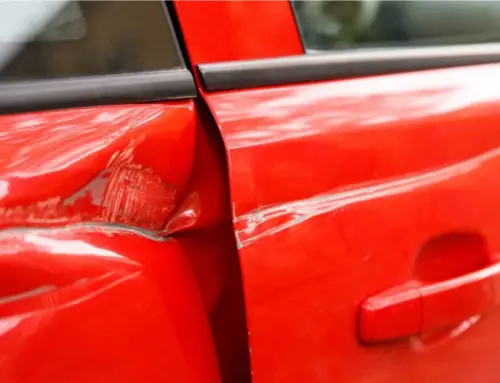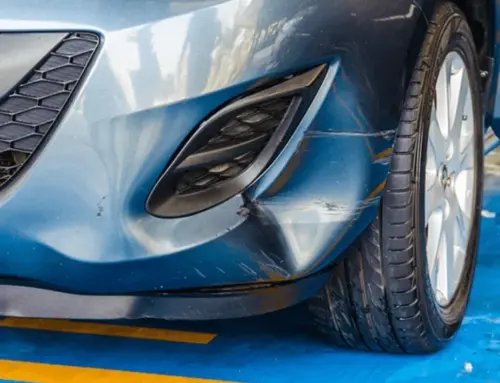Are you looking for a quick remedy for those unsightly dents on your vehicle? Most professional auto body shops currently provide paintless dent removal, a fast and effective restoration method. Paintless dent removal, which was established more than 80 years ago, is becoming increasingly popular among today’s automobile owners who wish to save time and money while returning their vehicle to its pre-accident condition.
If we dig a bit deeper, we’ll discover that paintless dent repair (PDR) is a method of mending and restoring a vehicle’s body to its pre-damage, near-pristine state. The process of PDR is often used to repair damage to the car’s exterior caused by natural factors and environmental contaminants and remove dents and dings.
Why do you want to know what it’s like to get a dent repaired without paint? Consider it a technique as much as a process. There are four stages to the PDR process.
- Examine the circumstances
This entails identifying the dents, establishing the amount and severity of the damage, and determining whether PDR can be used to repair them. The specialists will examine the vehicle to see if it is a viable candidate for paintless dent repair. They will also determine if the specific dents can be repaired using PDR methods.
- Obtain the dent
In many circumstances, removing panels and other pieces of the car’s exterior will be required to access the area on the other side of the dent. This additional work can increase the price of PDR, but is often required when removing the ding.
- Examine the ding in detail.
Before they operate, the technicians, like surgeons, need to gain a clearer picture of the dent in question. This involves examining the cut in detail with specialized tools, including magnification lenses, lights, and mirrors. Specialists will inspect the damage on each side of the dent, inside and out.
- Massage the dent out.
Technicians utilize special instruments to “massage” the dent and restore it to its original state by putting pressure on the rear side of the dent. Once the pressure is removed, paintless dent repair can be performed.
In some instances, this procedure cannot remove a dent from your car’s exterior, and the specialists will make a minor key or paint to match it.
Technicians who provide these repairs are often prepared to work at any hour of the day because they understand that dents can be easier to remove if performed quickly, within minutes of their appearance. This fast turnaround is why PDR has rapidly grown in popularity among car owners.
In what ways does paintless dent removal work?
Small and medium-sized dings and dents are the most effective, although larger dents can be repaired with paintless dent repair. Dents in the parking lot of a grocery store, hail damage, and other minor dents are all examples. The operation will be more complicated if the dent is larger. So, how effective is dent removal with paintless? It can be quite useful in repairing mild and moderate car damages.
What effect does your paint have on the PDR process?
The paint on a metal or aluminum body panel may appear to have nothing to do with eliminating a dent, but it has a lot to do with it and the PDR method’s limits!
Automotive paint, as previously stated, has a limit to how far it may stretch before cracking. Some paints are more pliable than others, allowing them to withstand a more significant, more severe dent without being destroyed or disturbed. It is unlikely that the paintless dent repair technique will heal your dent if the paint has broken or been damaged down to the metal, and your vehicle’s body panel will need to be replaced.
The nice thing about modern automobile paint is that it has more to offer than just looks. It’s a lot more than simply a gorgeous face for your car! It has a lot of good qualities and serves as a protective covering.
The majority of acrylic polyurethane enamel paints that are based on the water have excellent elasticity and are nevertheless highly environmentally friendly. Impacts and dents that would ordinarily cause your paint’s elastic limit to be exceeded and fracture or become damaged are now totally repairable by the PDR procedure because of their tremendous elasticity and resilience.
The flexibility and resilience of some older automobile paints aren’t as good as they used to be. However, there are certain exceptions to this rule. Compared to water-based acrylic polyurethane enamel paints, modern automobiles employ more brittle paints and clear coatings, which might cause paint to be less elastic. We’ve all seen vintage cars from the 1970s and 1980s at junkyards and parking lots where a tiny dent has caused the paint to peel and chip. In this scenario, all that is required is a fresh coat of paint on the panel.
Materials for Body Panels that may be Repaired with PDR
The paintless dent repair procedure may generally be used to fix most metal and alloy body panels. The PDR procedure can be used to repair any car made of sheet metal, aluminum, or an alloy, as long as the panel isn’t too badly damaged. This is because, as previously stated, these panels may be fashioned with hand tools, are pliable, and have a metal memory. The paintless dent repair procedure can be used to repair the majority of automobile body panels, however, depending on their cases.
Materials that cannot be repaired by PDR
Some body panels are manufactured of different materials for a reason, and they cannot be fixed using the paintless dent restoration method. For example, the paintless dent repair procedure cannot be used to fix things like plastic bumpers, fiberglass fenders, carbon fiber hoods, and composites.
This is due to the fact that the majority of these materials are unlikely to dent in the first place. Although dents can be easily removed from plastic bumpers and doors, they cannot be repaired using PDR since they do not have a metal memory like other panels. Plastic panels are usually discarded and replaced when they become broken. It will be necessary to order pieces from a dealership or auto body shop, such as bumpers, trim, and other plastic parts for your vehicle’s exterior.
Fiberglass and carbon fiber are more brittle materials that are more likely to shatter or split than dent when damaged. If this is the case, they will need to be professionally fixed with filler or by an expert.
The majority of paintless dent repairs are completed quickly and by the end of the day. The length of time it takes to repair a dent is mainly determined by its location and intensity; some dents that indicate more serious damage may demand more time from the specialists.
Our highly educated professionals at Piedmont Dent Repair have the skills and experience to expertly repair your car’s using PDR and restore its original appearance. Consider us your dent repair shop without the need for paint. We can also take care of a significant dent if you have one.
Make an appointment with us if you wonder if your car’s freshly discovered dent is a candidate for PDR. Don’t wait too long to repair dents since if they’re not fixed right away, they’ll become larger and cause more difficulties.




